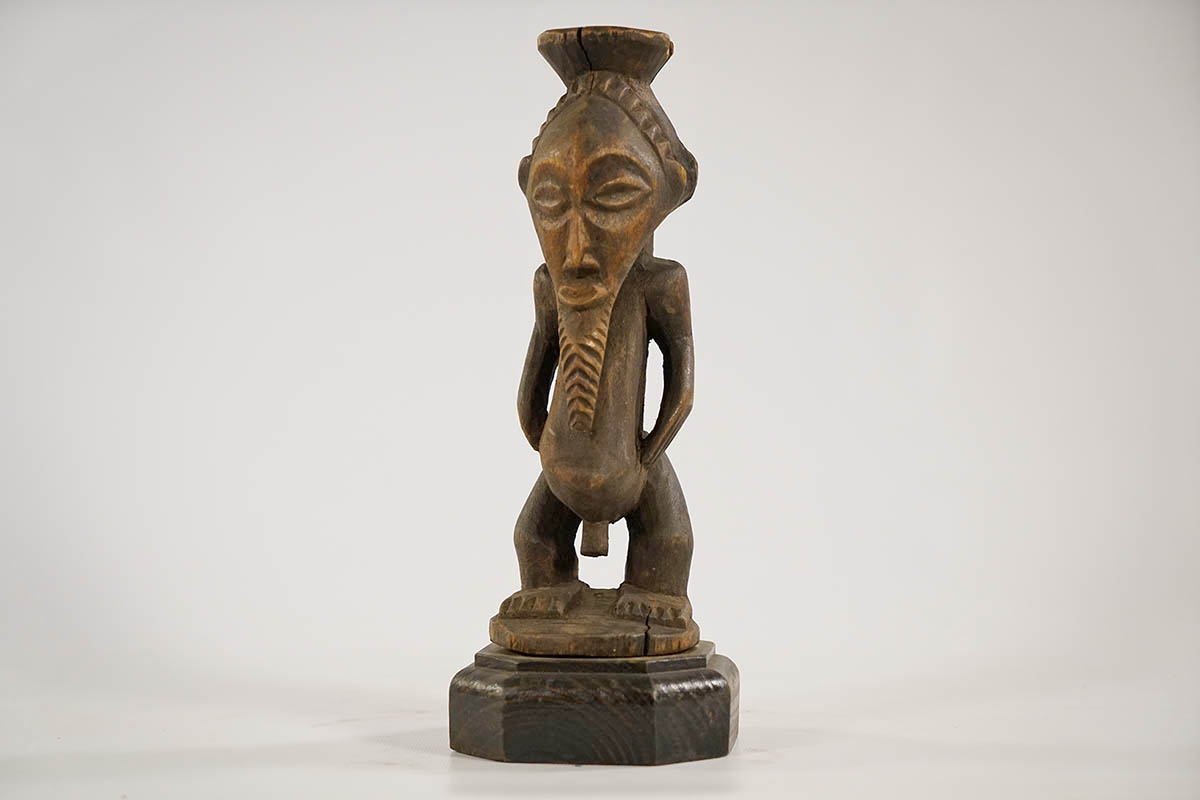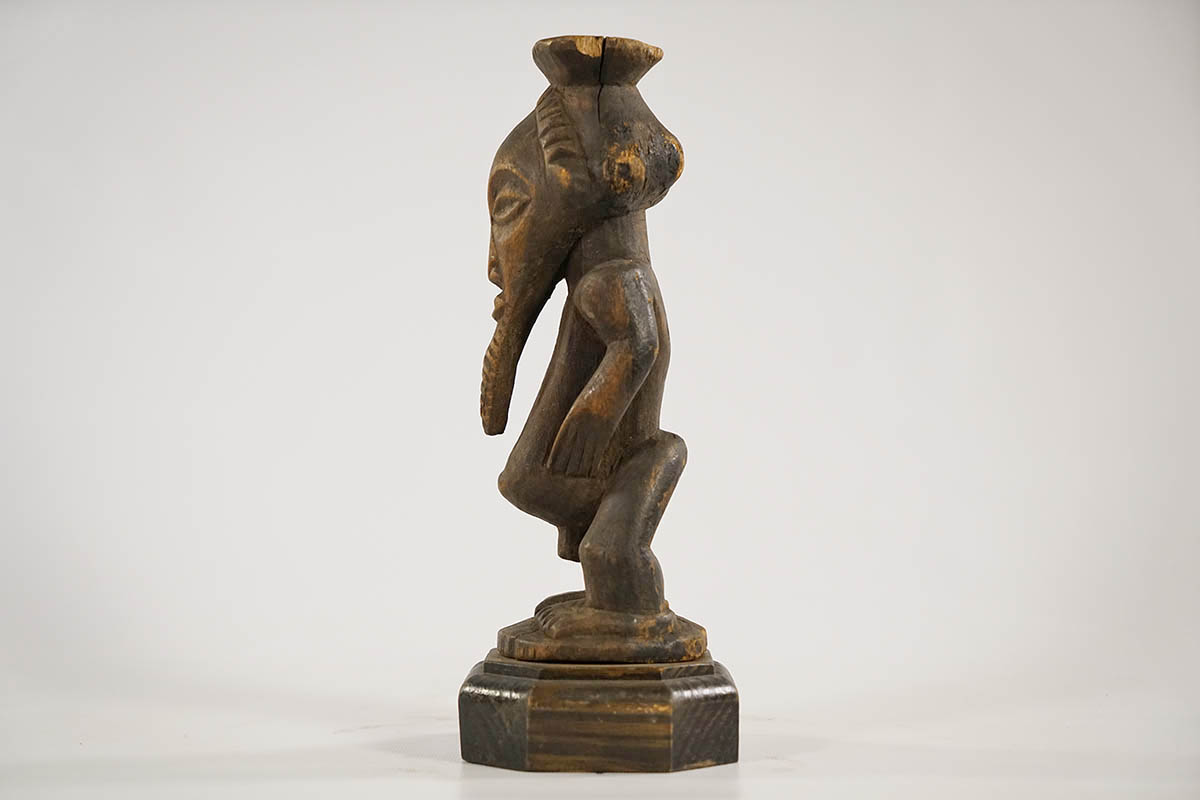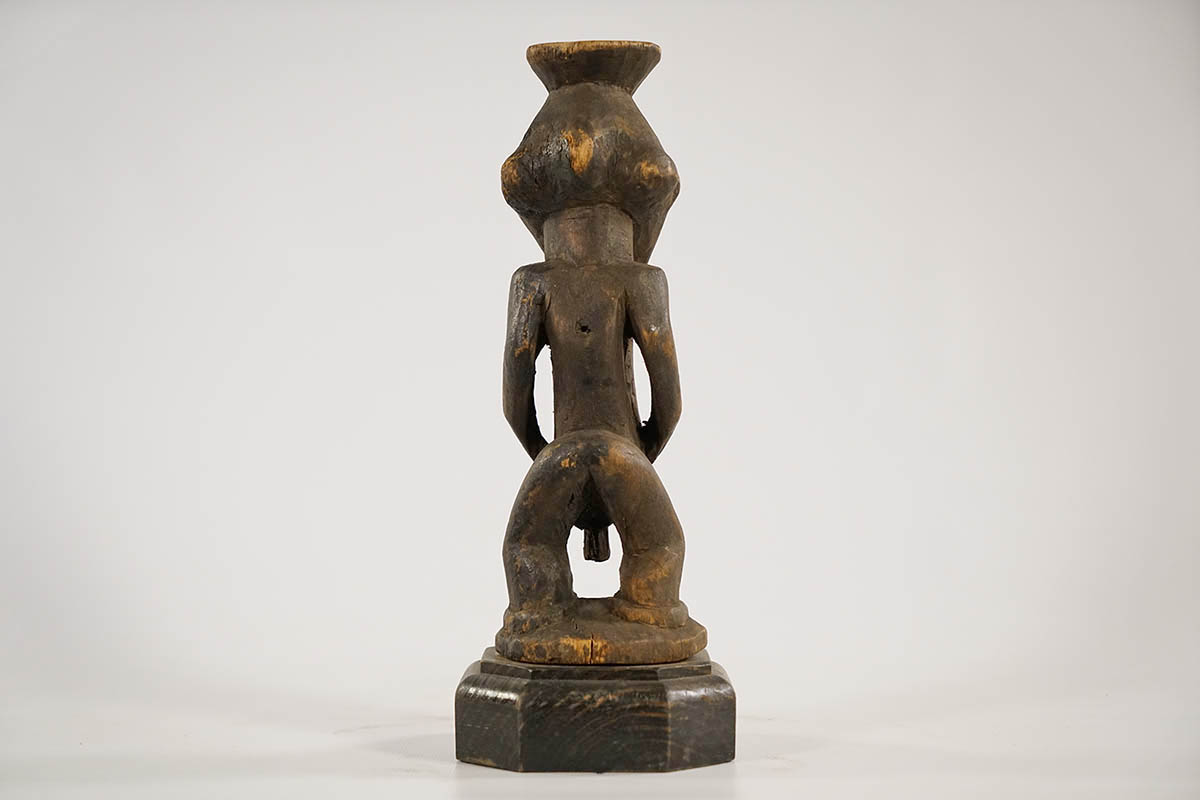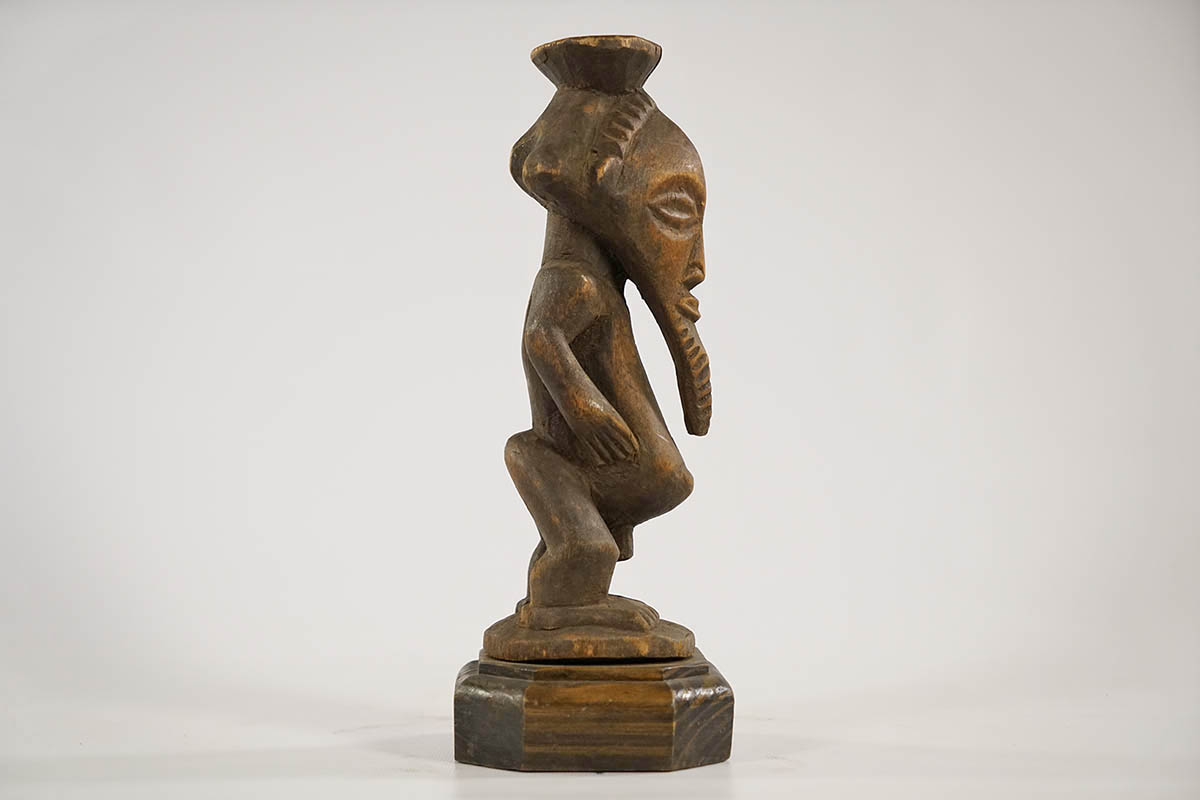This is a hand carved miniature statue made by the Songye people from DR Congo. He stands on a custom base making him 11 inches tall and weighs 1 pound. There is a crack on the bottom portion of the piece.
Mini Songye Figure 11″ on Custom Base | DRC | African Art
$87.50
Sold

| Type of Object | Figure, statue |
|---|---|
| Country of Origin | DR Congo |
| Ethnicity | Songye |
| Material | Wood, Pigment |
| Approximate Age | Unknown |
| Height | 11" |
| Width | 4" |
| Depth | 4" |
| Weight | 1 lb |
| Overall Condition | Possible minor imperfections and wear & tear, including but not limited to scuffing, cracking and minimal chipping. Possible previous repairs. See photos or inquire for more details. |
Tribe Information
About the Songye People
“During the 16th century, the Songye migrated from the Shaba area, which is now the Democratic Republic of Congo (formerly Zaire), and settled on the left bank of the Lualaba River, on a savannah and forest-covered plateau. Divided into numerous sub-groups, the 150,000 Songye people are governed by a central chief, the Yakitenge, whose role demands that he obey special restrictive laws such as not showing grief, not drinking in public and not shaking hands with men. In addition, local rulers, the Sultani Ya Muti, distribute plots of land to their villagers and an influential secret society, Bwadi Bwa Kifwebe, counterbalances their power. Unlike their neighbors, the Luba, the Songye tribe is a patriarchal society in which agriculture is central to the economy.”
Source:
Baquart, Jean-Baptiste. The Tribal Arts of Africa. New York: Thames and Hudson Inc. 1998. Print.
You must be logged in to post a review.
Additional Information
About the Songye Figures
“Songye fetish figures are numerous and vary in size from 10 to 150 cm. They are usually male and stand om a circular base, have an elongated torso framed by set-apart arms and their hands rest on their abdomen. Their enlarged head has a square or pointed chin, an open mouth and a triangular nose set between enlarged globular eyes. Strips of metal nails or other paraphernalia are sometimes applied over a face which counteract evil spirits and aggressors and channel lightening against them. Moreover, the top of the head and the abdomen are usually hollowed to allow insertion of fetish material, Bishimba, which imbues the figure with power. A ‘specialist’, called the Nganga, then attaches magical objects such as snakeskins, feathers, metal necklaces and bracelets to the figure to enhance its power even more. Occasionally these figures are suspended for apotropaic purposes inside a house by inserting a metal rod under each arm. Large fetish figures protect entire villages and are kept in special miniature huts, while smaller ones are used to protect individuals against death and disease. The handling of these fetish figures occurs mostly during new phases of the moon.
Different fetish styles can be distinguished: the Kalebwe style from the north is carved with a square chin; the Kibeshi style is characterized by the pointed chin; the western style, influenced by the Luba, shows figures with their heads turned to the side; eastern-style figures sometimes wear the Kifewebe mask; and finally, the southern-style figures often demonstrate an elongated annulated neck.
A group of about twenty figures and stools with similar characteristics such as flattened feet, prominent breasts and grooved coiffures has been identified as the work of a carver or his workshop, active from the beginning of the century until 1925.”







Reviews
There are no reviews yet.